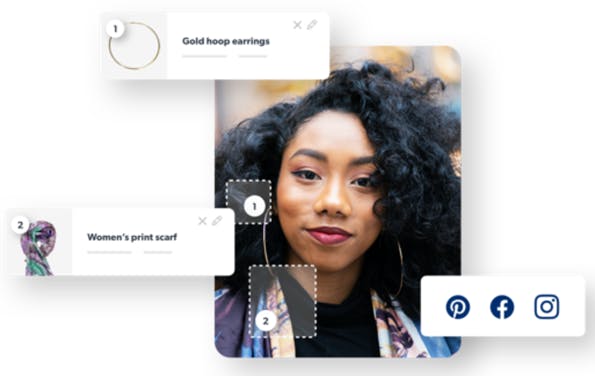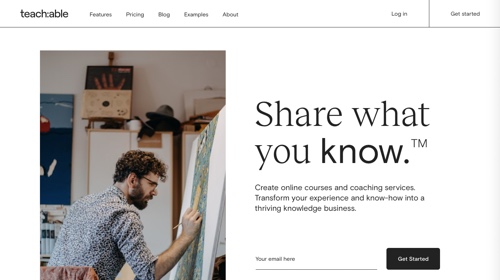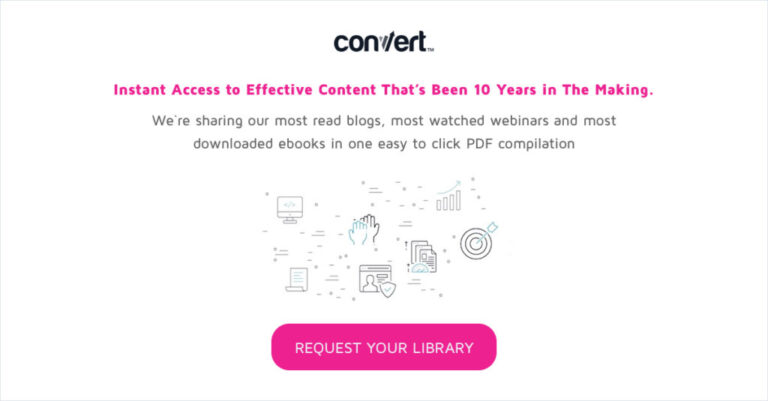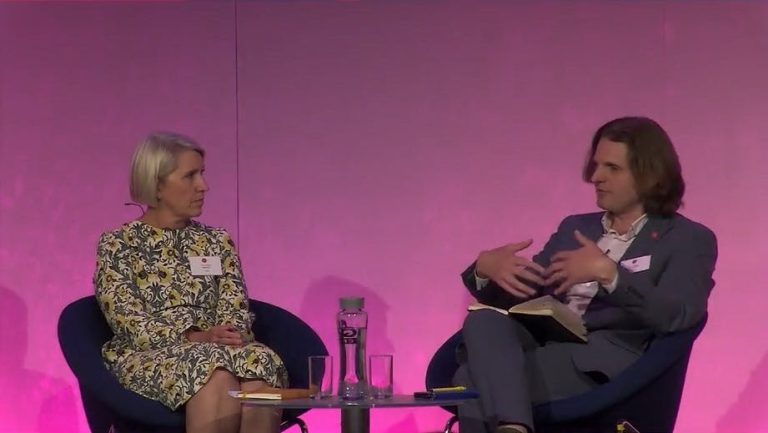Facebook’s Edwards is insistent that brands should manage their expectations, “UGC could be a huge red herring for brands,” he warns. “We’ve seen Ocean Spray have huge success with Fleetwood Mac on TikTok and that brings with it a whole new way for people to hunt out that viral content. But it’s always going to be the outlier. It’s great if it happens to you, but you could waste so much energy chasing it.”
The pandemic has accelerated the evolution of user-generated content
Beyond advocacy and content, there is a third, vital service that UGC provides to brands. That is its ability to deliver insight into consumer needs and future trends. While writing reviews or posting on social media, consumers are often acting instinctively and intuitively. This means the authenticity of their interaction can reveal new insights into their behavior.
Much is made of the need for companies to develop agile mindsets, particularly in the fast-changing world thrust upon us by COVID-19. Flexibility and an openness to learn and evolve are an important part of engaging with UGC.
Clearly, there is an imperative to engage with the most active and engaged content creators. This is why so many companies engage in sampling campaigns with some of their most active users.
[embedded content]
Social media is playing a central role influencing shopping habits
Of course, one way of gaining more control over the narrative while also setting ‘brand safe’ parameters, is to engage with influencers. This approach would still fall under the UGC banner, but with a more formalized relationship.
The volume and variety of social platforms and the opportunities for consumers to share their views and content is only going to grow – and rapidly so. Not only will these platforms increase in number, the way users interact with them will continue to evolve.
Being constantly open to new ideas doesn’t always come naturally to corporates. The habit of ‘trial and testing’ needs to be proactively introduced and practiced until it becomes second nature. And, it needs to be introduced across the entire business.
Site visitors who were attracted by UGC typically doubled their dwell time on the site while those who went on to buy increased by 184% and spent, on average, 45% more.
Scott Birse, Integrated Media Leader at IKEA reveals, “When we first went into UGC, there was a big nervousness from global partners. But the UK has been a market that leads testing and trying new things and we very quickly saw some really good results from it. This year, we’re going to roll it out across the whole range of global sites.”
The power of social influence
Customers value a detailed review over a simple numerical or star value. So, it follows that the ‘richer’ the review, the more engagement it will receive. It is also a guard against fraud, as consumers become ever more aware of review ‘farms’ and now view copious detailed but eerily similar and gushingly positive reviews with suspicion.
Customers are well-attuned to the difference between a corporate shot and one that might have come from ‘real life’. This is another reason companies are increasingly keen to bring UGC into their mainstream communications.
It’s not surprising that brands and platforms are working hard to understand how they can harness the power of UGC and social proof.
Tapping brand advocates and influencers for richer reviews
It was shown on UK national television network, Channel 4, in October 2020 and across multiple channels over a series of months. “It’s often more powerful to encourage advocacy amongst fans rather than the content always coming directly from the brand,” Hegarty adds.
Using galleries, the brand integrated a feature that allows consumers to add items showcased in UGC to their wish list. They save products that inspire them while not interrupting their browsing – or buying – experience.
For example, UK fashion retailer and Bazaarvoice customer River Island has put UGC front and center on its website. The company has said that when a consumer arrives on its site, it wants to inspire them and introduce them to items they may not have known existed. There is a full-page gallery of lifestyle-based content, as well as carousels on product pages to inspire visitors with authentic, shoppable images.
Through their actions, consumers show us which products and services matter to them the most. Companies can use these insights to mold their propositions more effectively than by using market research alone. But these insights are not something that can be discussed endlessly and left in development hell for months at a time. UGC is all about capturing the zeitgeist and trends wait for no committee.
This has certainly been the experience of L’Oréal’s Bradshaw-Zanger. “UGC created by both consumers and professionals is critical in our strategy. The health and beauty sector is massively driven by consumer opinions and professional advocacy and it’s one of the highest categories in terms of owned and earned, second only to travel,” says Bradshaw-Zanger.
Simon Breckon, Brand Director, Ellesse, reveals, “We drive a lot of growth in our community through actively targeting the 9%, the emerging influencers and creators. Both from an influencer marketing, targeting, and publishing framework, it’s a mix of what the brand stands for and how we can seed it in the right way.”
Tapping into fan passion to develop new creative approaches
“What we’ve seen through COVID is that it’s much more difficult to get studio pictures done so we’ve seen a number of innovative clients push us to get more pictures from customers. It’s much cheaper and easier to get a great picture from a customer, versus a staged environment,” Lucas Tieleman, Executive Vice President of Product at Bazaarvoice points out.
This evolved into a new campaign ‘Inspired by a True Photo’ which took user-generated images and made them the focus and inspiration. The first of these was a 90-second cinematic ad called ‘Onions’, based on a single photo of a bag of onions.
He notes that a reward-in-kind may prove the only incentive needed for the average ‘consumer on the street’ to delve into detailed review activity, although he is keen to emphasize that financial remuneration is not an avenue many should pursue.
Samsung Electronics is a good case in point, which created the #FromMyWindow hashtag to turn isolation into a creative opportunity. According to Marketing Director Sharon Hegarty “by promoting artistic sharing at a time when many felt suppressed, we generated positive engagement.”
People buy from people. From reviews and rich social content, to mainstream influencer programs and more, consumers take their purchasing cues from a huge variety of socially-driven sources. When brands harness those sources, the uptick in consumer trust and, ultimately, conversion is significant.
Building a clear content use case for business buy-in
Many brands like IKEA have certainly made good use of UGC with it becoming something of a virtuous cycle. The more UGC they show, the more widely it is shared and the more content they generate from consumers in return. However, brands must be careful not to get caught up in the hunt for that mythical beast – the content that just ‘goes viral,’ all of its own accord.
L’Oréal’s Bradshaw-Zanger sums up the role of UGC for most brands in the near future. “In a world where the consumer is bombarded by advertising and content from brands, it is true that there are a multitude of opportunities in using content that is, on the one hand, targeted and personalized, but on the other, coming from respected and relevant sources. This means that the relevance of influencers, ambassadors, prosumers and family and friends is more and more important in driving product recommendations. All our marketing strategies and objectives look at how to integrate influence and advocacy that is relevant for the consumer, with broad reach at the top of the funnel and more targeted sales conversion lower down.”
In this article we’ll look at some of the highlights of the research, based on more than a dozen interviews with senior executives at brands including Facebook, L’Oréal and Samsung Electronics.
However, allocating resources to sourcing unstructured and non-professional UGC can be a difficult ask internally so it’s important to point out what might be the ‘traditional’ business wins. The pandemic has been a useful ‘proof of concept’ for some.
Now, it is rapidly becoming the go-to communications strategy across all media and platforms for forward-thinking brands looking to navigate a post-pandemic world.
Utilizing UGC to predict the next big trend
The same principle will apply to UGC. Through automated technologies, brands will be able to ‘scrape’ the internet and social platforms for some of the most active, highest quality potential creators to acquire the most appropriate content for their own platforms.
This is where automation and machine learning are going to play crucial roles. Brands are already attuned to using automation to manage their social customer service interactions through bots. These bots don’t just respond with pre-populated answers to common queries, but they frequently have the ability to learn new queries over time, informing the business and giving it the opportunity to enhance its brand information resources.
“You can see what people do with your product and then you can harness that knowledge and put it back into your proposition. Users are telling you what you need to know,” Tieleman insists.

User-generated content, or UGC, is arguably one of the most important tools for businesses to emerge in the last decade. While UGC’s use has been gathering pace over the last 10 years as a way to unlock product innovation, reveal customer sentiment, and drive marketing strategy, the pandemic has seen it suddenly catapulted into the limelight.
The future of UGC – and the rise of automation
The concept of the ‘expert’ reviewer blurs the boundaries between the engaged consumer and the paid influencer. “We could be looking at people who build up a micro-expertise in something, reflecting the specialty retail trope. What if a product review could be a certification?” says Loran Gutt, Vice President of Corporate Development at Bazaarvoice.
Understandably, brands and particularly their leadership teams are nervous about investing heavily in the more unproven tools. Social media and UGC have plenty evidence behind them but there are always new platforms and new behaviors that show promise but aren’t necessarily backed up with solid figures. This sort of evidence can take time to emerge and, by the time a brand is fully on board, the trend has gone mainstream. Brands looking to earn a reputation for innovation and an ability to capture the zeitgeist won’t find it if they try to play safe.
Ecommerce will remain a critical channel in the ‘new normal’ and social media is going to prove an essential foundation.
Read the full report from Econsultancy and Bazaarvoice – and learn about the seven key success factors that brands need to focus on to harness the power of UGC today.
“From reviews, to content produced for our own marketing and social channels, to partner channels, to macro and micro influencers, consumers, prosumers, make-up artists, stylists and dermatologists, it’s key for us to strike a balance between the expert voice and a peer voice. What’s right for me, what’s right for my skin, what’s right for the way I want to look, is different for everybody and our consumers want to hear more than just the brand talking,” he insists.
“On a macro level, we’ve seen this mass digital education of consumers who were forced into it through necessity. It doesn’t matter how digitally sophisticated you were before, you learned new skills. And people who were locked out of digital businesses have been brought in. There have been some really big shifts in behavior,” says Ian Edwards, Planning Director at Facebook.






